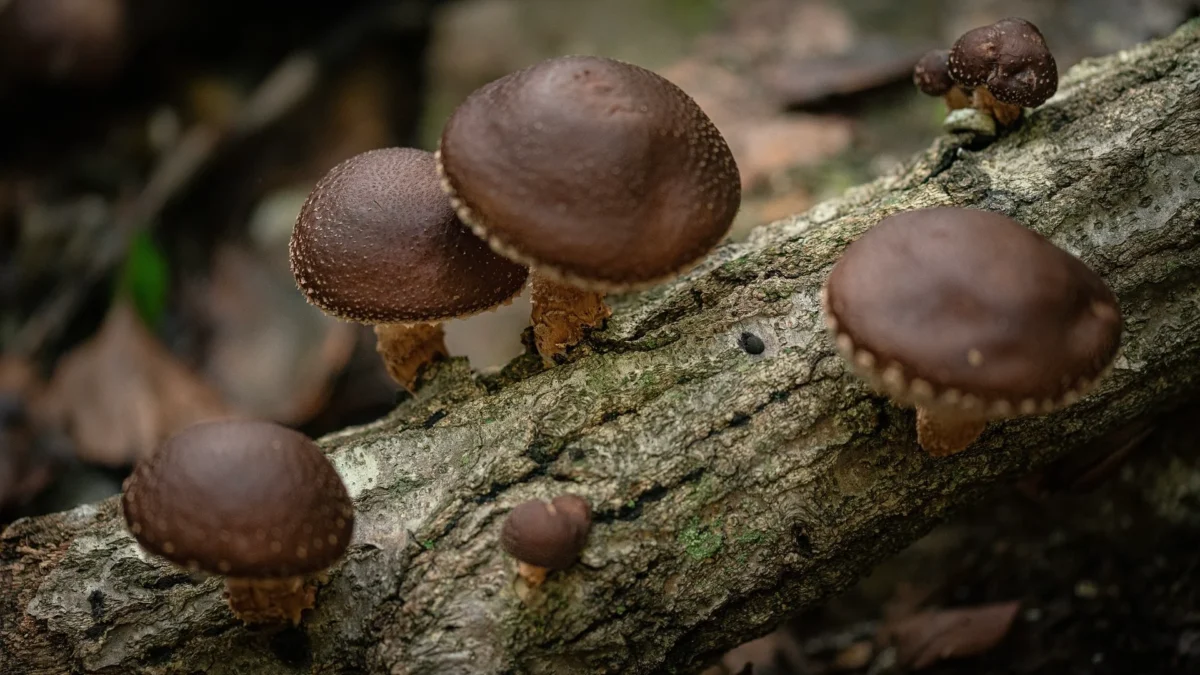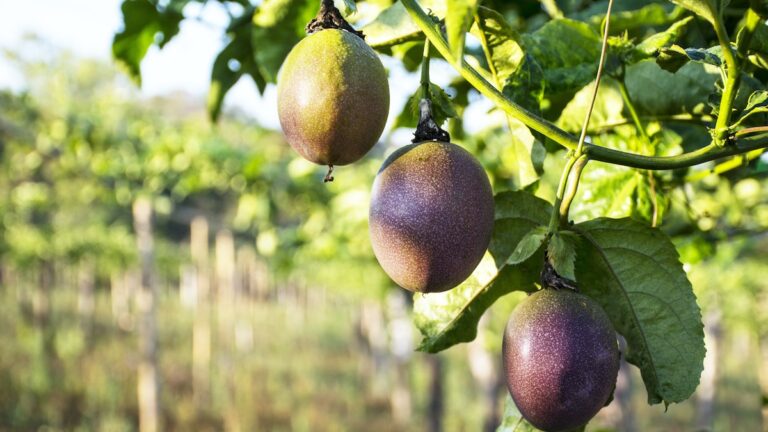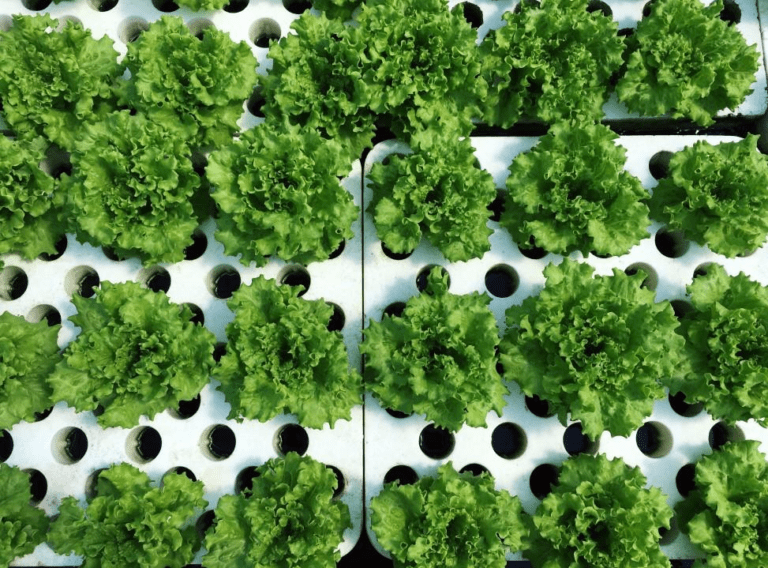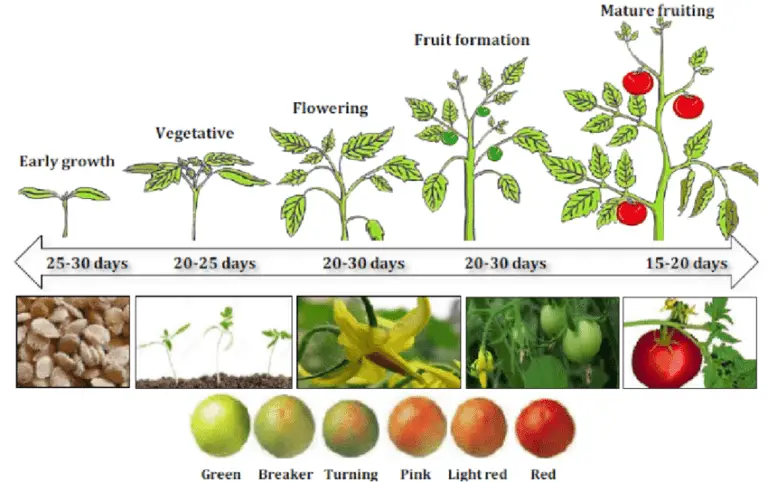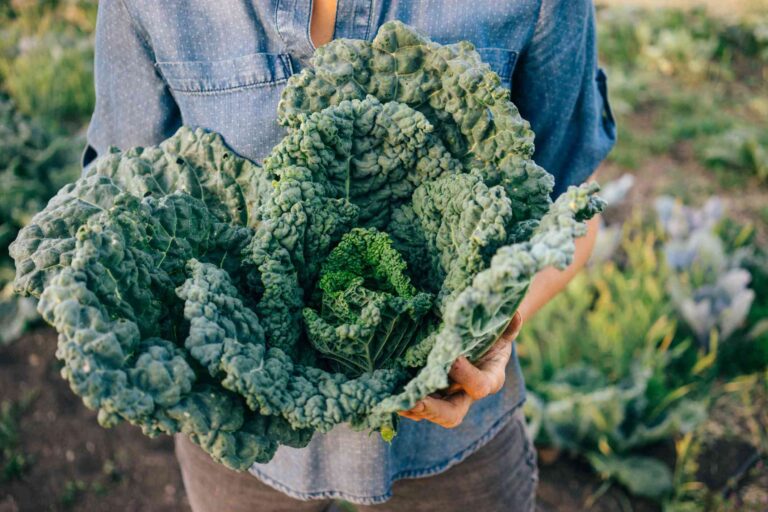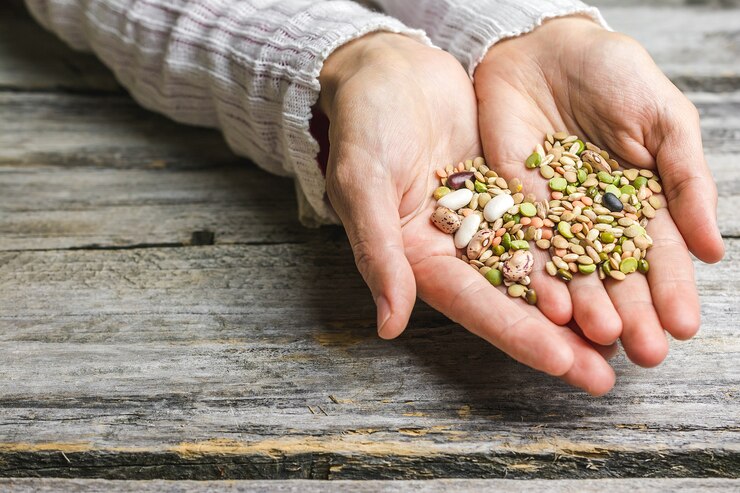Growing Shiitake Mushrooms at Home: A Guide
Understanding the Shiitake Mushroom: An Overview
The shiitake mushroom, scientifically known as Lentinula edodes, is a highly prized culinary and medicinal fungus. Originating from East Asia, this mushroom has gained popularity worldwide due to its rich umami flavor and potential health benefits. With its distinctive cap shape and meaty texture, the shiitake mushroom is a versatile ingredient that adds depth and complexity to a variety of dishes.
Not only is the shiitake mushroom renowned for its culinary value, but it also boasts a long history of medicinal use. Traditional Chinese medicine has revered this mushroom for its immune-boosting properties and believed it to promote overall well-being. Modern research has started to uncover the bioactive compounds present in shiitake mushrooms that contribute to their potential health benefits, such as supporting cardiovascular health and possessing anti-inflammatory and antioxidant properties. As a result, the demand for shiitake mushrooms has increased, prompting many gardening enthusiasts to explore the possibility of growing this prized fungus in their own homes.
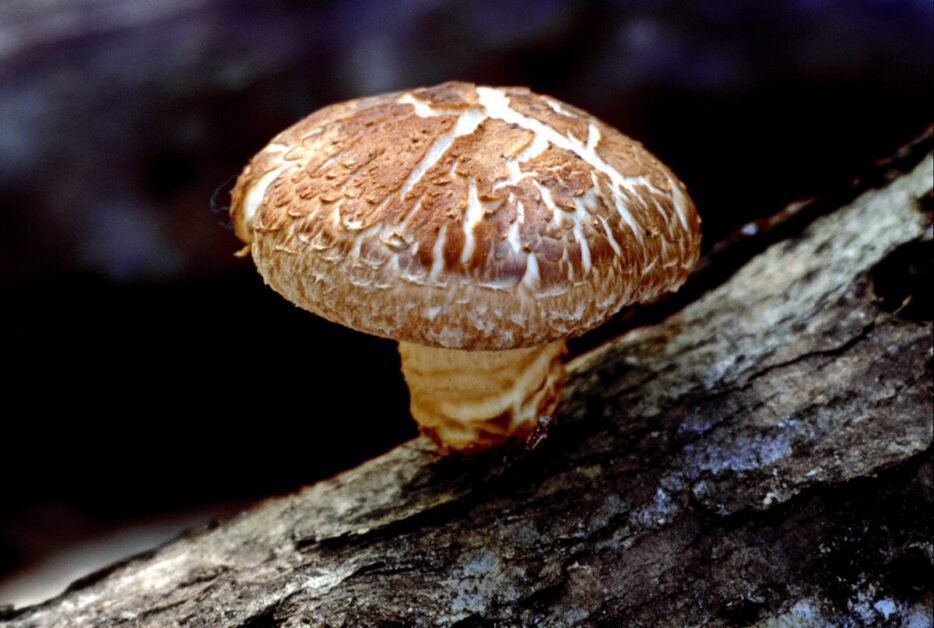
Understanding the basics of shiitake mushroom cultivation is vital for anyone interested in growing this flavorful and nutritious ingredient. From selecting the right strain and preparing the growing substrate to creating optimal growing conditions, there are various factors to consider. By delving into the intricacies of shiitake mushroom cultivation, you can unlock the secrets to successfully growing this unique mushroom right in your own home. Throughout this article, we will guide you through the process, providing step-by-step instructions, practical tips, and valuable insights to help you embark on a successful shiitake mushroom growing journey. So, let’s dive into the fascinating world of shiitake mushrooms and explore the possibilities that lie ahead.
Benefits of Growing Shiitake Mushrooms at Home
Shiitake mushrooms are a popular choice for home gardeners looking to add a unique and flavorful ingredient to their culinary repertoire. But beyond the delicious taste, there are several benefits to growing shiitake mushrooms at home that make them a worthwhile endeavor.
One of the main advantages of growing shiitake mushrooms at home is the control over the entire cultivation process. By growing your own mushrooms, you can ensure that they are free from pesticides, chemicals, and other harmful substances that commercial growers may use. This means you can enjoy the freshest, most organic mushrooms right from your own backyard. Additionally, growing shiitake mushrooms at home allows you to experiment with different growing techniques and strains, giving you the freedom to develop your own unique methods and flavors.
Another benefit of growing shiitake mushrooms at home is the cost savings. Purchasing fresh shiitake mushrooms from the grocery store can be quite expensive, especially if you use them frequently in your cooking. By growing them yourself, you can save a considerable amount of money in the long run. Plus, you’ll have the satisfaction of knowing exactly where your food is coming from and the pride of producing something yourself. Whether you’re an avid gardener or simply enjoy exploring new hobbies, growing shiitake mushrooms at home can be a rewarding and cost-effective experience.
Selecting the Right Shiitake Mushroom Strain for Your Home Garden
When selecting the right Shiitake mushroom strain for your home garden, there are several factors to consider. First and foremost, it is important to choose a strain that is well-suited for the climate and growing conditions of your region. Shiitake mushrooms thrive in moderate temperature ranges, typically between 55-75°F (12-24°C), with a relative humidity of 85-95%. Therefore, it is crucial to select a strain that can tolerate and adapt to the specific environmental conditions of your area.
Another key consideration is the desired flavor profile and culinary uses of the mushrooms. Different strains of Shiitake mushrooms can vary in terms of taste, aroma, and texture. Some strains are known for their rich and earthy flavors, while others may have a milder and more subtle taste. It is important to decide what kind of flavor you prefer and select a strain that aligns with your culinary preferences.

Additionally, it is essential to take into account the yield potential of different strains. Some strains may have higher productivity and can produce more mushrooms per log or substrate, while others may have a lower yield but offer other desirable characteristics. Assessing the yield potential of different strains will help you determine how many logs or substrates you need to cultivate to meet your desired mushroom production.
Overall, selecting the right Shiitake mushroom strain for your home garden requires careful consideration of factors such as climate adaptation, flavor preferences, and yield potential. By taking these aspects into account, you can ensure a successful and satisfying mushroom cultivation experience.
Preparing the Growing Substrate: A Step-by-Step Guide
Preparing the growing substrate is a critical step in cultivating shiitake mushrooms at home. The substrate, which serves as the nutrient source for the mushrooms, can significantly impact the growth and yield of your crop. Here is a step-by-step guide to help you prepare the perfect substrate for your shiitake mushrooms.
1. Select the right substrate: Shiitake mushrooms thrive on a variety of substrates, including hardwood sawdust, straw, or a combination of both. It’s essential to choose a substrate that is nutrient-rich and free from contaminants. Hardwoods like oak or maple are commonly used as they provide the ideal conditions for shiitake cultivation.
2. Sterilize the substrate: To eliminate any competing organisms or pathogens, sterilizing the substrate is crucial. This can be done through two main methods: heat and chemical sterilization. Heat sterilization involves steaming the substrate at a specific temperature for a defined duration, while chemical sterilization entails using chemicals like hydrogen peroxide. The method you choose will depend on the resources available to you and your preference.
By following these steps, you’ll create an environment that is favorable for the growth of shiitake mushrooms. The next section will explore choosing the ideal growing location for your mushrooms to ensure optimal conditions for their development. Stay tuned!
Choosing the Ideal Growing Location for Shiitake Mushrooms
When selecting the ideal growing location for shiitake mushrooms, there are several factors that need to be considered. First and foremost, shiitake mushrooms thrive in a temperate climate with a stable temperature range. It is recommended to choose a location that remains relatively cool, between 55-75 degrees Fahrenheit (12-24 degrees Celsius), throughout the year.
In addition to temperature, humidity is another crucial factor for successful shiitake cultivation. The ideal humidity range for shiitake mushrooms is between 85-95%. Therefore, it is important to choose a location with good moisture retention, such as a shaded area with ample access to water sources, to maintain the necessary humidity levels.
Moreover, adequate air circulation is essential for shiitake mushrooms to thrive. Choose a location that allows for proper ventilation to prevent the buildup of stagnant air, which can lead to the growth of harmful fungi or molds. This can be achieved by placing the growing area in an open space or using fans to ensure a consistent flow of fresh air.
Lastly, it is crucial to protect the growing area from direct sunlight. While shiitake mushrooms require light for fruiting, direct exposure to sunlight can lead to overheating and dryness, which can negatively impact their growth. It is best to choose a location that provides filtered or indirect light, such as under the cover of trees or in a greenhouse.
By considering these key factors – temperature, humidity, air circulation, and light exposure – you can select an ideal location that will provide the optimal conditions for shiitake mushroom cultivation.
The table below shows the conditions for growing shitake mushroom indoor:
| Factors to Consider | Recommendations |
|---|---|
| Temperature | 1. Shiitake mushrooms thrive in a temperate climate. |
| 2. Choose a location with a stable temperature range between 55-75°F (12-24°C) throughout the year. | |
| Humidity | 1. Maintain an ideal humidity range of 85-95%. |
| 2. Choose a location with good moisture retention, such as a shaded area with ample access to water sources. | |
| Air Circulation | 1. Ensure proper ventilation to prevent stagnant air. |
| 2. Choose a location with adequate air circulation; consider open spaces or use fans for consistent airflow. | |
| Light Exposure | 1. Shiitake mushrooms require light for fruiting. |
| 2. Protect the growing area from direct sunlight to prevent overheating and dryness. | |
| 3. Choose a location that provides filtered or indirect light, such as under trees or in a greenhouse. |
Creating the Optimal Growing Conditions: Temperature, Humidity, and Light
In order to successfully cultivate shiitake mushrooms, creating the optimal growing conditions is crucial. Temperature, humidity, and light are key factors that contribute to the healthy growth and fruiting of these mushrooms.
Temperature plays a critical role in the development of shiitake mushrooms. The ideal temperature range for growing shiitake mushrooms is between 55°F and 75°F (13°C and 24°C). This moderate temperature range ensures proper mycelium growth and allows for the formation of quality fruiting bodies. It is important to monitor and maintain a consistent temperature throughout the growing cycle to optimize the mushroom’s growth and productivity.
Humidity is another vital aspect that needs careful attention. Shiitake mushrooms thrive in environments with high humidity levels. The optimal humidity range for shiitake cultivation is between 80% and 90%. This moisture-rich environment helps the mycelium to colonize the growing substrate and promotes the healthy development of mushroom caps. Proper humidity can be achieved by misting the growing area regularly or using humidity control devices such as humidifiers or fans.
Inoculating the Substrate with Shiitake Mushroom Spawn
Inoculating the substrate with shiitake mushroom spawn is a crucial step in the cultivation process. It is during this stage that the mushroom mycelium, the vegetative part of the fungus, is introduced into the growing medium. The spawn acts as the starting point for the growth and development of shiitake mushrooms.
The first step in inoculating the substrate is to select high-quality shiitake mushroom spawn. It is important to choose a reputable source that provides certified spawn, ensuring that you are starting with a healthy and viable culture. The spawn can come in various forms, such as sawdust spawn, grain spawn, or plug spawn, depending on your preference and the growing medium you are using.
Once you have obtained the desired spawn, you can begin the inoculation process. This is typically done by mixing the spawn with the chosen substrate. Some popular substrates include hardwood logs, sawdust, straw, or a combination of these materials. The spawn is evenly distributed throughout the substrate to ensure uniform colonization. Care should be taken to maintain cleanliness and avoid contamination during this process.
Inoculated substrates are then stored in an appropriate environment, where the mycelium can begin to colonize and grow. Temperature, humidity, and light conditions must be carefully monitored and adjusted to create an optimal environment for mycelial growth. It is important to note that shiitake mushrooms are sensitive to fluctuations in these factors, so consistent control is crucial for successful cultivation.
As the mycelium spreads throughout the substrate, it will eventually form a network of white filaments, indicating successful colonization. This process typically takes several weeks to months, depending on the specific strain and growing conditions. Once the substrate is fully colonized, it is ready for the next stage of cultivation – fruiting.
Inoculating the substrate with shiitake mushroom spawn is a critical step that sets the stage for successful cultivation. By choosing high-quality spawn and providing optimal growing conditions, gardeners can ensure a healthy and productive shiitake mushroom harvest.
Caring for Shiitake Mushroom Logs: Watering, Fruiting, and Harvesting
Caring for Shiitake Mushroom Logs: Watering, Fruiting, and Harvesting
Watering is a critical aspect of caring for shiitake mushroom logs. Adequate moisture levels are essential for the growth and development of these fungi. While shiitake mushrooms require a moist environment, it is crucial not to overwater the logs as excessive moisture can lead to the growth of unwanted molds and pests.
To ensure proper watering, it is recommended to soak the mushroom logs in water for 24 hours before initiating the fruiting process. This helps to replenish the moisture content within the logs and prepare them for mushroom production. Following this initial soak, regular misting or spraying the logs with water is advised. This helps to maintain the required humidity levels, ensuring optimal conditions for fruiting.
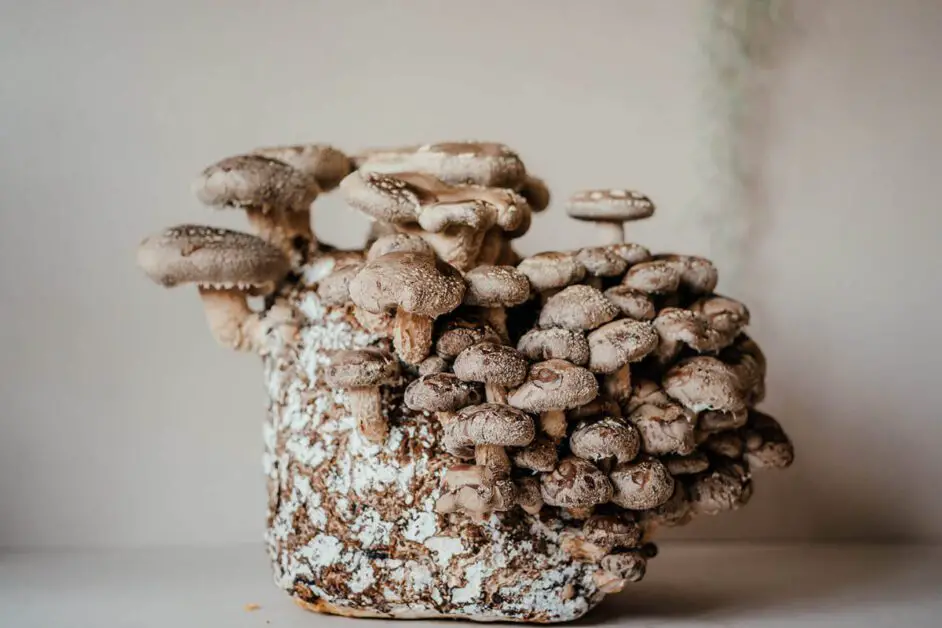
When it comes to fruiting, shiitake mushrooms typically appear within 6 to 12 months after inoculating the logs. The fruiting process can be stimulated by shock, such as submerging the logs in water for a short period. Additionally, maintaining the appropriate temperature and humidity levels can encourage fruiting. Once the mushrooms have fully matured and the caps have opened, they are ready for harvest. Gently twisting or cutting the stem close to the log is the proper method for harvesting shiitake mushrooms.
With proper care and attention to watering, fruiting, and harvesting, you can be on your way to enjoying a plentiful harvest of shiitake mushrooms from your own home garden.
Troubleshooting Common Issues in Shiitake Mushroom Cultivation
Shiitake mushroom cultivation can be a rewarding endeavor, but like any gardening venture, it can come with its fair share of challenges. Troubleshooting common issues in shiitake mushroom cultivation is an essential skill that every home gardener should possess. By understanding the potential problems and their solutions, you can increase your chances of a successful harvest.
One common issue that growers may encounter is slow or uneven mushroom growth. This can be caused by various factors, such as improper moisture levels, inadequate light exposure, or incorrect temperature. To address this, ensure that your growing substrate is properly hydrated but not overly saturated. Monitor the temperature in your growing area, aiming for an optimal range of 55-75°F (13-24°C). Additionally, provide adequate light to your mushrooms, whether through natural sunlight or artificial sources such as LED grow lights.
Another challenge that may arise in shiitake mushroom cultivation is the occurrence of pests and diseases. Fungal infections, mold, and insects can pose a threat to your mushroom crop. It is crucial to maintain proper hygiene and sanitation practices throughout the cultivation process. Regularly inspect your growing area for any signs of infestation or disease, and promptly address them by removing affected mushrooms or logs, and disinfecting the surrounding area. Consider implementing preventive measures such as using clean water and sterile equipment, as well as employing natural pest control methods like introducing beneficial insects or using organic fungicides. Remember to consult with experts or refer to reputable resources for the best methods to combat specific pests and diseases in shiitake mushroom cultivation.
The table below shows the common issues and how to solve them:
| Common Issue | Possible Causes | Solutions |
|---|---|---|
| Slow or Uneven Mushroom Growth | 1. Improper moisture levels in the growing substrate. | 1. Ensure proper hydration of the substrate without over-saturation. Monitor and adjust moisture levels accordingly. |
| 2. Inadequate light exposure for mushrooms. | 2. Provide optimal light conditions, either through natural sunlight or artificial sources like LED grow lights. | |
| 3. Incorrect temperature range (55-75°F or 13-24°C) | 3. Monitor and control the temperature in the growing area to fall within the recommended range. | |
| Pests and Diseases | 1. Fungal infections, mold, and insects. | 1. Maintain strict hygiene and sanitation practices throughout the cultivation process. Regularly inspect for signs of infestation or disease. |
| 2. Contaminated water or equipment. | 2. Use clean water and sterile equipment. Implement preventive measures such as regular disinfection and proper sanitation procedures. | |
| 3. Lack of preventive measures, like using beneficial insects or organic fungicides. | 3. Implement preventive measures to control pests and diseases, including introducing beneficial insects or using organic fungicides. | |
| 4. Promptly address signs of infestation or disease by removing affected mushrooms or logs. | 4. Regularly monitor and take swift action when signs of pests or diseases are observed. | |
| 5. Consult with experts or refer to reputable resources for specific pest and disease control methods. | 5. Seek advice from experts and refer to reliable resources for tailored solutions to combat pests and diseases. |
Expanding Your Shiitake Mushroom Production: Propagation Techniques
Propagation techniques are essential for expanding your shiitake mushroom production and ensuring a sustainable supply of these prized culinary delights. One popular method is by using shiitake mushroom spawn, which consists of mycelium-infused substrate that serves as the starting point for new mushroom growth. By inoculating fresh logs with shiitake spawn, you can create an ideal environment for the mycelium to colonize and produce abundant fruiting bodies.
To propagate shiitake mushrooms using spawn, start by selecting fresh hardwood logs, such as oak or maple, that are approximately 4 to 6 inches in diameter and 3 to 4 feet in length. Next, drill evenly spaced holes along the length of the log, approximately 1 inch deep and 6 inches apart. These holes will serve as the entry points for the spawn. Gently insert the spawn into the holes and cover them with a food-grade wax or cheese wax to prevent contamination and maintain moisture levels. Finally, store the inoculated logs in a cool, shady area with good air circulation, allowing the mycelium to colonize the logs over several months.
By following proper propagation techniques, you can efficiently expand your shiitake mushroom production and enjoy a bountiful harvest. Ensuring the health and vigor of your spawn and logs is crucial for a successful propagation process, so it’s important to source high-quality spawn from reputable suppliers. Stay tuned for our next section, where we will explore sustainable practices in shiitake mushroom cultivation to further enhance your production methods.
Utilizing Sustainable Practices in Shiitake Mushroom Cultivation
Utilizing sustainable practices in shiitake mushroom cultivation is not only beneficial for the environment, but it also promotes long-term viability and profitability for growers. By adopting eco-friendly methods, you can reduce your ecological footprint and contribute to a healthier ecosystem. Additionally, sustainable practices can enhance the overall quality and flavor of your shiitake mushrooms, making them more appealing to consumers who value organic and responsibly grown produce.
One key aspect of sustainable shiitake mushroom cultivation is the use of renewable and locally sourced materials for substrate preparation. Instead of relying solely on commercial substrates, you can explore alternative options such as using agricultural by-products, like sawdust or straw, which not only reduces waste but also minimizes the need for transportation and associated carbon emissions. Additionally, incorporating organic amendments and compost into the substrate can improve its nutrient content, leading to healthier mushrooms and reducing the reliance on synthetic fertilizers.
Another important aspect of sustainability in shiitake mushroom cultivation is efficient water management. Water is a precious resource, and by implementing practices such as drip irrigation or automated watering systems, you can minimize water wastage, while ensuring that your mushrooms receive the optimal moisture levels they require. Additionally, capturing and reusing rainwater can further reduce your reliance on freshwater sources, making your cultivation process more environmentally friendly.
Watch the video to learn more about shitake mushroom indoor cultivation.
Harvesting and Storing Shiitake Mushrooms: Best Practices
Harvesting and storing shiitake mushrooms properly is crucial to maintain their flavor, texture, and nutritional value. When it comes to harvesting, timing is everything. Shiitake mushrooms should be harvested when the caps are fully expanded and before they begin to flatten out. It’s important to use clean and sharp scissors or a knife to cut the mushrooms at the base of the stem, ensuring that you don’t damage the substrate or other mushrooms in the process.
After harvest, handling the mushrooms with care is essential to prevent bruising and maintain their quality. Gently clean the mushrooms with a soft brush or a damp cloth to remove any dirt or debris. Avoid rinsing them with water as mushrooms are porous and can absorb excess moisture, which can lead to spoilage. Once cleaned, it’s time to store the mushrooms. Storing shiitake mushrooms in a breathable container or paper bag in the refrigerator is the best option. Wrapping them in a damp paper towel can help them retain moisture without getting too wet. Remember to check the mushrooms regularly, removing any that show signs of spoilage to prevent the spread of mold and maintain the freshness of the remaining ones.
Exploring Culinary Uses and Nutritional Benefits of Shiitake Mushrooms
Shiitake mushrooms are not only known for their rich and savory flavor, but they also offer a wealth of nutritional benefits. With a meaty texture and earthy aroma, these mushrooms have become a popular ingredient in many culinary dishes. Whether you’re a seasoned chef or a home cook, exploring the culinary uses of shiitake mushrooms can bring a delightful twist to your recipes.
One of the standout features of shiitake mushrooms is their high nutritional value. Packed with essential vitamins and minerals, these fungi can be a fantastic addition to a balanced diet. Shiitake mushrooms are an excellent source of B vitamins, including riboflavin, niacin, and pantothenic acid, which play crucial roles in energy production and the maintenance of healthy skin. Additionally, they provide a substantial amount of minerals such as copper, selenium, and zinc, which are essential for immune function and overall well-being.
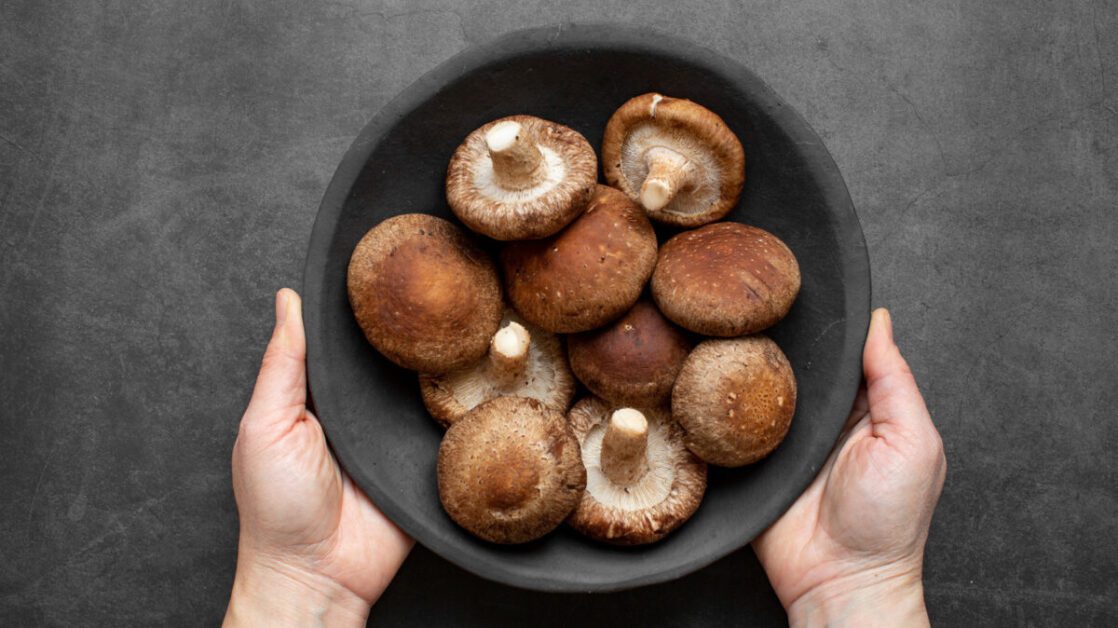
In terms of culinary versatility, shiitake mushrooms can be used in a variety of dishes to enhance flavor and texture. They can be sautéed, grilled, or roasted to bring out their rich umami taste, adding depth to stir-fries, soups, and risottos. Their robust flavor also pairs well with meat and poultry, making them an excellent choice for hearty stews or meat-based sauces. If you’re looking for a vegetarian or vegan option, shiitake mushrooms can even be used as a meat substitute, offering a satisfying and flavorful alternative.
As you explore the culinary uses of shiitake mushrooms, you’ll be delighted by their unique flavor profile and the creative possibilities they offer in the kitchen. Stay tuned for recipes, tips, and tricks on how to make the most of these versatile fungi in your cooking adventures. So, get ready to embark on a culinary journey with shiitake mushrooms and discover a whole new realm of delicious and nutritious dishes.
Marketing and Selling Your Homegrown Shiitake Mushrooms
Once you have successfully grown a bountiful harvest of shiitake mushrooms, you may be eager to share your homegrown delights with others. Marketing and selling your homegrown shiitake mushrooms can be a rewarding experience, both financially and in terms of connecting with the local community.
To begin, it is essential to establish a clear brand identity that showcases the superior quality of your mushrooms. Consider designing professional labels and packaging that highlight the unique characteristics and benefits of shiitake mushrooms, such as their rich flavor and potential health-enhancing properties. Incorporating eye-catching visuals and informative labeling can help differentiate your product in a competitive market.
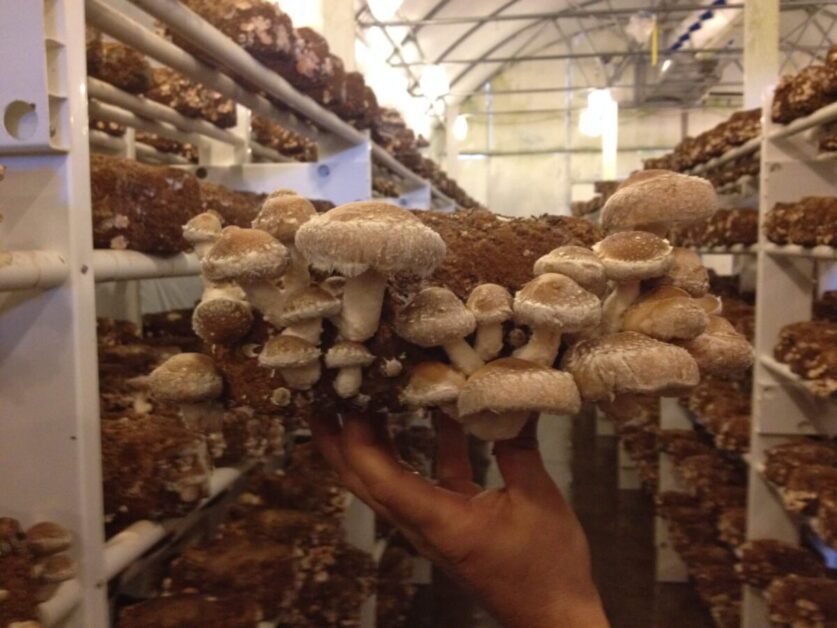
Next, explore various marketing channels to reach potential customers. Establishing relationships with local grocery stores, restaurants, and farmers markets can provide excellent opportunities to sell your mushrooms directly. Additionally, consider creating an online presence through social media platforms and a dedicated website to reach a wider customer base. Engaging with customers through informative content, recipes, and customer testimonials can help build a loyal following.
Remember, customer satisfaction is vital for maintaining a successful business. Ensure your mushrooms are harvested at the peak of freshness and quality and meticulously cleaned before packaging. Consistency in delivering a top-notch product will help build a strong reputation, leading to repeat business and positive word-of-mouth advertising.
By employing effective marketing strategies and providing high-quality mushrooms, you can establish a thriving business selling your homegrown shiitake mushrooms. Embrace the opportunity to share your passion for these delectable fungi with others and enjoy the benefits of connecting with your local community through this unique culinary offering.
Health and Safety Considerations in Shiitake Mushroom Cultivation
When it comes to cultivating shiitake mushrooms at home, it’s important to consider the health and safety aspects of the process. While growing these delicious fungi can be a rewarding experience, it is essential to take proper precautions to ensure a safe and healthy environment. Here are some key considerations to keep in mind:
1. Maintaining sterility: Shiitake mushrooms are susceptible to contamination from various microorganisms. To prevent unwanted bacteria or fungi from infiltrating your growing environment, it is crucial to maintain proper sterility throughout the entire cultivation process. This includes disinfecting and sanitizing all equipment, working in a clean and controlled area, and employing hygienic practices such as handwashing and using sterile gloves.
2. Handling and storage: While shiitake mushrooms are generally safe to consume, it is essential to handle them with care to minimize any potential risks. Always wash your hands before and after handling the mushrooms, and use clean utensils and cutting boards to prevent cross-contamination. Additionally, ensure that your harvested mushrooms are promptly refrigerated to maintain their freshness and reduce the risk of spoilage or bacterial growth.
By prioritizing these health and safety considerations in your shiitake mushroom cultivation endeavors, you can enjoy a fruitful and secure growing experience. Remember to consult reliable sources and seek guidance from experienced cultivators to further enhance your knowledge and expertise in this fascinating endeavor.
Joining Shiitake Mushroom Communities and Resources for Further Learning
Joining Shiitake Mushroom Communities and Resources for Further Learning
As a shiitake mushroom enthusiast, you may find immense value in connecting with like-minded individuals and accessing resources that can expand your knowledge and skills in mushroom cultivation. One way to achieve this is by joining shiitake mushroom communities and leveraging the plethora of resources they offer.
Online forums, social media groups, and dedicated websites are teeming with passionate individuals who are eager to share their experiences and expertise in cultivating shiitake mushrooms. Engaging in these communities allows you to tap into a wealth of knowledge, learn from the successes and challenges of others, and exchange valuable insights. By actively participating in discussions, you can seek guidance, ask questions, and receive practical advice from seasoned growers who have honed their techniques over the years.
Additionally, these communities often provide access to valuable resources such as articles, videos, tutorials, and guides that cover various aspects of shiitake mushroom cultivation. From choosing the right growing substrate to troubleshooting common issues, these resources can serve as valuable references throughout your mushroom-growing journey. By investing time in exploring these resources, you can enhance your understanding of the intricacies involved in cultivating shiitake mushrooms, thereby increasing your chances of successful harvests.
Furthermore, these communities can foster an environment of collaboration and support, where growers can share updates on their progress, discover new techniques or innovations, and even collaborate on research projects. Engaging with fellow enthusiasts and experts in this manner can open doors to exciting opportunities for experimentation, learning, and growth in the field of shiitake mushroom cultivation.
In conclusion, joining shiitake mushroom communities and accessing the resources they offer is an excellent way to expand your knowledge, gain valuable insights from experienced growers, and interact with a community that shares your passion for mushroom cultivation. By actively participating and exploring the resources at your disposal, you can immerse yourself in a supportive and informative network that will elevate your skills and deepen your understanding of shiitake mushroom cultivation. So, why not take the next step and connect with these communities to embark on an enriching journey of learning and discovery?
Where can I find shiitake mushroom communities and resources for further learning?
There are several online platforms and forums dedicated to shiitake mushroom cultivation, such as shiitakemushroomforum.com and shiitakemushroomgrowers.com. These communities provide a wealth of information, tips, and support for both beginner and experienced growers. Additionally, you can find books, articles, and videos on shiitake mushroom cultivation from reputable sources like agricultural extension offices, universities, and agricultural publications.
Are there any specific courses or workshops available for learning about shiitake mushroom cultivation?
Yes, there are various courses and workshops that offer in-depth training on shiitake mushroom cultivation. These can be found through agricultural organizations, local universities, and extension offices. Some online platforms also offer video courses and webinars for individuals who prefer learning at their own pace.
Can I connect with other shiitake mushroom growers in my area?
Yes, connecting with other shiitake mushroom growers in your area can be beneficial for sharing knowledge, resources, and experiences. You can search for local gardening or mycological clubs, attend agricultural fairs or mushroom festivals, or join social media groups focused on mushroom cultivation.
Are there any certifications or credentials available for becoming a professional shiitake mushroom grower?
While there are no specific certifications or credentials solely for shiitake mushroom cultivation, there are general certifications available in the field of agriculture and mycology. These certifications can enhance your credibility and knowledge as a professional grower. Organizations like the American Mushroom Institute offer certifications and training programs for mushroom cultivation.
How can I stay updated with the latest advancements and research in shiitake mushroom cultivation?
To stay updated with the latest advancements and research in shiitake mushroom cultivation, it is recommended to follow reputable agricultural publications, subscribe to relevant newsletters, and join scientific journals related to mycology and agriculture. Attending conferences, workshops, and webinars can also provide opportunities to learn about new techniques and research findings.

